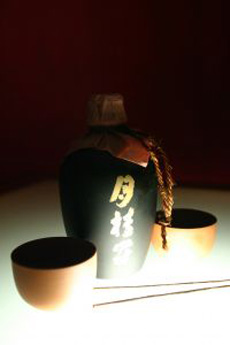Saké GlossaryPage 1: Ginjo Sake & Other Terms & Definitions A ~ H
CAPSULE REPORT: Saké is categorized by the percentage of the outer husk of the rice that is milled away, or polished, before processing. This enables more complex flavors to develop. While the categorizations do not necessarily reflect the quality of the saké, in general, the more of the grain is eliminated, the more delicate the flavor of the saké tends to be. While it’s made from rice and often referred to as “rice wine,” it’s not technically a wine, which, by definition is fermented from fruit. Like beer, it is fermented from grain, although the production processes are significantly different. WHAT ARE YOUR FAVORITE FOODS?LEARN MORE ABOUT THEM IN OUR OTHER FOOD GLOSSARIES. Click on a letter to go to the appropriate glossary page: This glossary is protected by copyright and cannot be reproduced in whole or in part without written permission. Daiginjo Saké or Daiginjoshu: Ultrapremium saké, the finest quality. Handmade, free run, small batch saké made with purified water, the finest quality rice milled to at least 50%—some are milled to 35%—and the most refined processes to create the most complex character and layers of flavor. Aged in temperature-controlled stainless steel tanks for at least nine months. Can be junmai or honjozo (alcohol added); if no alcohol is added it is labeled junmai. These delicate sakés with more gently flavored foods, such as poached whitefish or raw scallops.FLAVOR PROFILE: Fragrant, full flavors, short finish. See also ginjo and futsu.
Futsu or FutsushuSaké:Ordinary saké or economy saké, made with lesser ingredients, with rice milled down only to 70% of the grain, with less complex processes, and aged 3 months or less. Typically served warm (premium saké is generally best served slightly chilled), the alcohol level can be as low as 4%. Can be junmai or honjozo. About three-quarters of all the saké produced in Japan is futsushu. See also daiginjo and ginjo. Genshu Saké:The strongest saké, genshu means “cask strength.” Also referred to as undiluted saké, as little water is added in the brewing. Thus the alcohol percentage is the highest of all sakés—18% to 21%, compared to a typical nigori saké, which has one of the higher levels of alcohol at 15%. |
||
Ginjo Saké or Ginjoshu:Premium saké. Made with better ingredients than economy saké, with rice milled down to 60% of the grain (40% removed), better processes, and aged for at least 6 months in steel tanks, it delicate, light and complex with a fragrant nose. The complexity has to do with the additional milling away as well as special yeast, lower fermentation temperatures and labor-intensive production techniques. It can be junmai ginjo (no alcohol added) or simply ginjo (distilled alcohol added). Ginjos can be paired with bigger flavors, like toro, grilled chicken and tempura. FLAVOR PROFILE: fragrant nose, other elements in more subtle balance. See also daiginjo and futsu.
Honjozo Saké or Honjozoshu:Along with junmai, one of two broad categories of saké generally available in the U.S. At least 30% of the rice polished away. Honjozo differs from junmai in that a small amount of distilled alcohol has been added at the end of fermentation—generally 5% by volume. The alcohol smoothes and lightens the flavor and makes the fragrance more prominent. There are sakés that have a higher percentage of added alcohol than honjozo sakés, but they are almost never imported into the United States. In Japan, about 88% of all sakés are honjozo. For average sakés, the distilled alcohol is usually processed grain alcohol. Finer sakés may use distilled alcohol collected from the esters during fermentation, which enhances the aroma. FLAVOR PROFILE: Fragrant, earthy, long finish. See also junmai.
|
 Artisan saké. Photo by Lukasz Kryzanowski | SXC. |
|
|
Continue To Next Page: Terms I Through K |
||
Last Updated Mar 2021
© Copyright 2005-2025 Lifestyle Direct, Inc. All rights reserved. All images are copyrighted to their respective owners.